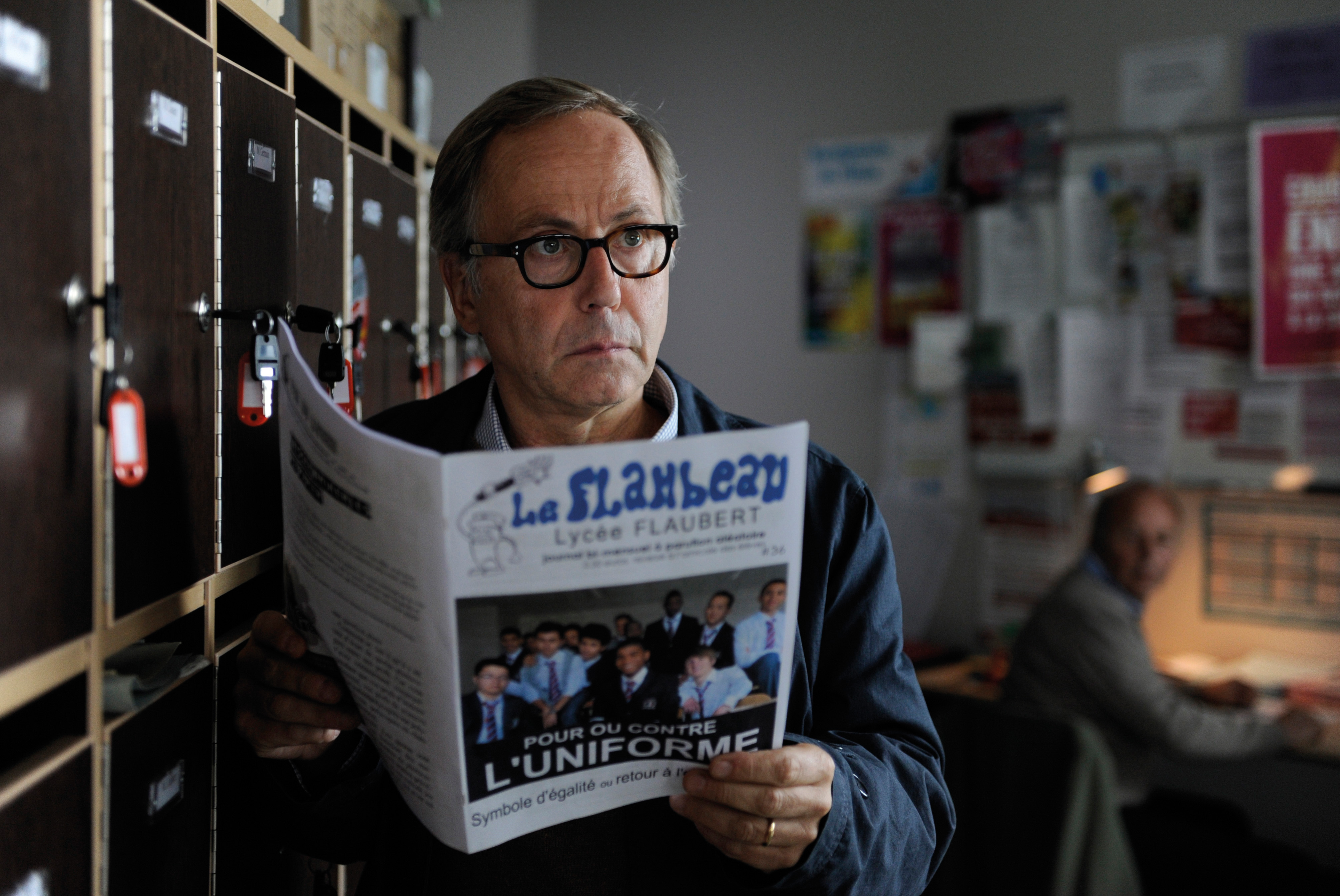At Any Price
Opens Fri., May 17 at Pacific Place and Sundance Cinemas. Rated R. 105 minutes.
The cycle of teeny-bop pop stars is so short these days that Zac Efron now almost seems a relic. Didn’t he star in those Beach Party movies with Annette Funicello and Frankie Avalon? To his credit, however, he’s been picking decent film projects—like working with Ramin Bahrani, the director of Chop Shop and Man Push Cart. Bahrani, an American of Iranian heritage, is a new-school neorealist, intent on the downtrodden yet resilient among us—those who haven’t been blessed with looks and luck, like Efron.
In rural Iowa, Dean (Efron) is desperate to get off the farm and away from his overbearing father Henry (Dennis Quaid). And Henry is desperate to stay ahead in the seed-sales business, which is far more valuable than his family farm. Both are cogs in big-money systems: Dean needs to pay for a ride in the NASCAR farm leagues, and Henry’s hawking genetically modified (or GMO) seeds, their patents strictly controlled by a huge agribusiness cartel. “Expand or die” is Henry’s motto, as he seeks to amass more land, which he farms in an air-conditioned, GPS-controlled tractor, checking commodity prices on his BlackBerry.
Along with Henry’s neglected wife (Kim Dickens) and mistress (Heather Graham), the family conflicts and plot elements are way too familiar. The ever-solid Quaid strains to be Lomanesque, but the writing isn’t there. Bahrani has an admirable, naturalistic feel for the burden of his characters, only he grants them no expression. At Any Price achieves an earnest kind of catharsis by the end, but it never sings. Brian Miller
Graceland
Runs Fri., May 17–Thurs., May 23 at Grand Illusion. Not rated. 84 minutes.
The device at the heart of Graceland is unsavory but gripping: A flunky for a crooked politician is driving his daughter and his boss’ daughter home from school when kidnappers pounce. The baddies immediately kill one of the girls and drive away with the other, a huge ransom demand trailing in their wake.
The twist? The kidnappers have killed the wrong girl, and the driver is the only person who knows that his daughter, not the rich guy’s kid, is the one held captive. As it happens, this is not the only twist waiting in Ron Morales’ Graceland, a Philippine suspense picture that puts the hammer down, hard.
Along with his general fraudulence, the politico is also a pedophile, a super-creep in a seamless turn by veteran Filipino actor Menggie Cobarrubias. Thanks to his depravity, we sink not merely into a horror show of bribery and kidnapping but also sex trafficking—and this rough-edged production does not opt for the chilling discretion of the recent Eden, preferring instead to clump its way right into various dens of iniquity.
The driver, Marlon (played by angel-faced, slack-jawed Arnold Reyes), is mercilessly put-upon: He hides the evidence of the dead girl and maintains the illusion she’s still alive, while fending off harassment by the kidnappers and questions from a hostile cop (Dido De La Paz, in an eyeball-bulging performance) who knows there’s something messy about Marlon’s story. And if we haven’t mentioned Marlon’s bedridden wife, well, rest assured this subplot isn’t quite the sympathy-builder it might seem.
Morales spares us nothing in pushing this corkscrewed story through its tight 83 minutes. Graceland raises the question of where socially aware drama tips into exploitation. But by the looks of things, it was never meant to be subtle. This movie wants to make an impact, and in its grungy, free-swinging way, it does.
That impact comes from the depiction of a criminal world but also from the everyday glimpses of Manila that Morales uses as his setting. Class prejudice, official corruption, and seemingly ubiquitous trash form the backdrop for the plot, and these impressions might linger longer than the tale of a kidnapped child. Scenes set literally in a vast garbage dump become almost indistinguishable from scenes set in ordinary neighborhoods, and riverbeds teem with discarded junk. In short, it’s not a travel brochure for Manila, but an effective, almost toxic, journey to the underworld. Robert Horton
The Iceman
Opens Fri., May 17 at Varsity and other theaters. Rated R. 105 minutes.
Like many a true-crime tale, the story of Richard Kuklinski sounds like it would make an incredible movie. A hired killer, Kuklinski also murdered for the sheer sport of it. When he was arrested in 1986, his wife and children had no idea he’d been doing anything illegal. They thought he was a businessman.
The Iceman is further proof that not all true-crime tales make incredible movies. A dreary wallow in the mire, this one goes wrong almost from the start—save for the lead casting. The Iceman is carried on the formidable back of Michael Shannon, the Frankensteinian actor from Take Shelter and Boardwalk Empire. He brings the eerie focus of a man who could smite you down just for looking at him sideways—ideal for this role, though limiting for projects that don’t require the unsettling threat of immediate death.
Somehow this outwardly quiet maniac finds a wife (Winona Ryder, suitably fragile) and settles into small-town Jersey life while prospering as a hit man for a second-rate gangster (Ray Liotta). As in every gangland saga, mob-world etiquette is as rigid as an imperial court’s, so when Kuklinski breaks protocol, he has to improvise to make ends meet. This leads him to the practice of deep-freezing his victims so they can be held for future disposal, a specialty that earns him his nickname.
Scattered through this grisly scenario, which goes on for decades, are stock lowlifes played by actors who clearly cannot resist the chance to slap on a vintage ’70s mustache: Chris Evans, David Schwimmer, Stephen Dorff. Everybody but James Franco, right? Oh, wait, here he is, in a 10-minute cameo as a sleazebag given an unusual opportunity by Kuklinski: As he splutters out prayers under the killer’s gun, Kuklinski promises to wait a few minutes in case God wants to intervene.
That episode is drawn directly from Kuklinski’s memories of his career. If director Ariel Vromen had stuck with a more documentary-style cruise through the man’s appalling life, perhaps The Iceman would’ve found an appropriately chilling groove. Instead we hear about Kuklinski’s abused childhood, and even begin to root for him when the sleazy gangsters threaten his family. At some point he becomes like Billy Bob Thornton’s Sling Blade guy—yes, maybe he’s a tad maladjusted, but surely we can understand his protectiveness of home and hearth.
All of which undercuts Shannon’s undeniable strength in the part. It does make one eager for his upcoming turn as Superman’s nemesis in Man of Steel: There’ll likely be little time wasted on exploring the psychological underpinnings of General Zod. Robert Horton
PIn the House
Opens Fri., May 17 at Seven Gables. Rated R. 105 minutes.
Francois Ozon’s parents were schoolteachers. That could account for the slyly mixed feelings he shows toward the protagonist of his new film. Meet Germain, a high-school teacher whose commitment to his profession is tested by his boredom, his frustrated dreams of being a writer, and the seductive series of papers turned in by a precocious student.
Not “seductive” in the obvious sense—the movie’s got more on its mind than an inappropriate affair. What Germain (Fabrice Luchini) sees in the serial narrative written by Claude (Ernst Umhauer) is a spark of talent, a reason to invest himself in a student, and a string of cliffhangers that have him—and eventually his wife (Kristin Scott Thomas)—waiting breathlessly for each new installment.
This is an amusing starting point for a movie, but what’s beguiling and ominous about In the House is the way Germain becomes entangled in Claude’s world. In each report, Claude recounts new details of how he’s insinuated himself into a classmate’s upper-middle-class household, but withholds information about what his purpose might be.
Germain does some fatherly tut-tutting about the ethical issues involved, but the “To be continued . . . ” at the end of each paper has him hooked on vicarious adventure—including an unhealthy interest in whether Claude will make headway with his classmate’s foxy mother (Emmanuelle Seigner). Then Germain himself begins appearing in Claude’s narrative, and . . . well, best leave the remainder of the story there. Ozon’s films, Swimming Pool and 8 Women among them, tend to balance the sinister and the silly in gratifying measures, and he’s really on his game here. Germain’s journey is a sort of nightmare comedy in which he fulfills his role as his own worst enemy.
I should confess that Luchini, who has been portraying the quintessential Frenchman for three decades now, is one of my favorite actors. He’s a master at conveying self-satisfaction that cries out to be punctured, but he isn’t a caricature. He parries nicely with Scott Thomas—a gallery manager whose latest show is pretentiously oversexed—and their comfortable, childless marriage can hardly compare with the excitement of Claude’s purple prose, fictional though it may be.
In the House doesn’t entirely fall into place until the final sequence, a superb finish that makes you realize what this whole thing was about all along. (This also pays tribute to an instantly recognizable film classic.) It lives up to Germain’s advice to his student: The ending of the story must take the reader by surprise, but also be inevitable. By that measure, Ozon nails it. Robert Horton
Kon-Tiki
Opens Fri., May 17 at Harvard Exit. Rated PG-13. 101 minutes.
How many filmmakers today, apart from Werner Herzog, would drift across the South Pacific on a balsa-wood raft from Peru to Polynesia for the sake of an Oscar? Thor Heyerdahl did it in 1947, then wrote a book and made a movie about his 4,300-mile journey, winning the Best Documentary prize in 1951. This new Kon-Tiki is a feature dramatization of Heyerdahl’s attempt to prove Polynesia could’ve been settled from the Americas. Most anthropologists thought him wrong, and this Heyerdahl (Pål Hagen) can’t find academic backers for his expedition; living in New York after World War II, he’s humiliatingly rebuffed by the National Geographic Society. Like an indie filmmaker (which in a sense he was), Heyerdahl must scrape together funds, do his own publicity (via Morse code from the raft), and risk his neck to get the project done.
Kon-Tiki’s all-Norwegian cast shot the movie in two different languages under directors Joachim Roenning and Espen Sandberg, giving this fluent English version a charming veracity. The six actors become sunburnt, gaunt blond Vikings during their 101-day voyage, finally looking like survivors of Burning Man. Heyerdahl can’t swim, and he destroys his marriage with his Polynesian-settlement hypothesis (which turned out to be wrong, which the movie ignores in its postscript). Also, his colloquies with a stowaway crab do make you question his sanity. (Why not just cook and eat the thing?) Despite some tensions among the crew, the occasional lowering of Heyerdahl’s confident smile, and circling sharks, we know the outcome of their adventure. There’s not much drama, though there are a few nice moments of awe. Isolated like astronauts, alone on a calm, dark sea, the men stare up at the stars. “Maybe nature has accepted us,” Heyerdahl muses. Herzog would disagree, but isn’t it nice to think that way? Brian Miller
E
film@seattleweekly.com





